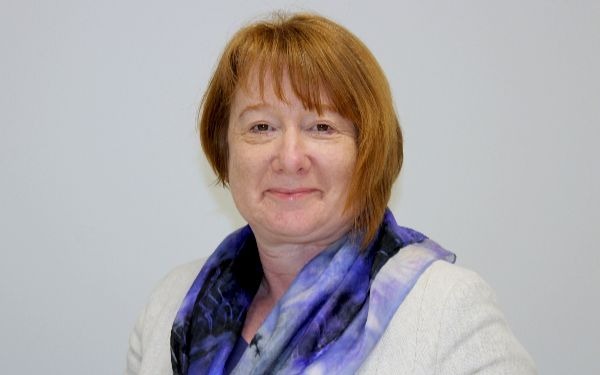
Ofsted has called on the government to distribute a new capital fund for children’s homes to local authorities urgently to help tackle a shortage in secure accommodation.
Earlier this month, the children’s minister, Vicky Ford, announced that the Department for Education (DfE) would introduce more funding for local authorities to spend on building children’s homes.
There are currently few details about the fund, including its size and whether councils will be able to spend it on secure homes, although Ford said the money would help to “ensure sufficient provision for children with more complex needs”.
Last week, Ofsted raised serious concerns about the shortage of secure places on the back of its annual data report on social care services.
The report said that around 25 children each day were waiting for an SCH place and currently around 20 children had been placed by English councils in Scottish secure units due to the lack of available places. However, this option is no longer available to English authorities, as the Scottish government has committed to only accept placements from local authorities within the country.
Ofsted also highlighted that, of the 13 secure children’s homes (SCHs) in England, none was in London or the West Midlands.
‘Funding must be rolled out at pace’
In an interview with Community Care, Yvette Stanley, Ofsted’s national director for social care, said she thought local authorities would be able to spend the DfE funding on building secure homes but said the money must be distributed “with pace”.
Stanley also urged the DfE to work with the Department of Health and Social Care (DHSC) and the Ministry of Justice (MoJ) to plan provision of secure children’s homes collectively.
Most children in SCHs are looked-after children placed by local authorities, but a significant minority are placed by the Youth Custody Service, part of the MoJ, following sentence for offences. Meanwhile, NHS England, which is accountable to the DHSC, commissions healthcare delivered in the settings.
Stanley said children in need of secure accommodation “don’t sit neatly in a Venn diagram of needs”, with some both a perpetrator and victim of child sexual exploitation, for example.
“They might also have mental ill health needs. They may pose a risk to themselves and others,” she said.
“About a third of the children in secure will have self-harmed or attempted suicide, so these are children who rightly need a supportive therapeutic environment and there just isn’t the facility.”
Stanley said local authorities in areas such as London might not be building any SCHs because of the higher cost of properties.
London’s local authority structure – with 32 separate boroughs – could also make it more difficult to justify investing in SCHs, she said, with each authority having limited need individually.
‘Central government lead needed’
She said joint planning between local authorities could help to increase provision in areas like the capital but said a central government lead was needed.
“Joint working and pooling resources between local authorities is one way forward,” she said.
“But we also need a national approach to commissioning – no single local authority can resolve this issue alone.”
A DfE spokesperson said it was local authorities’ responsibility to provide “sufficient and suitable” accommodation for children, which the department suggested its separate recently-opened £24m innovation-focused fund would help councils to fulfil.
“This year we will invest a further £24m to start a new programme focused on maintaining and increasing the number of places available so more children are in high-quality, safe homes close to their families and support networks,” they said.
Despite the pressures on SCH places, homes are not operating at capacity, according to latest government figures. These showed that, as of March 2021, there were 142 children in the 14 secure homes in England and Wales (87 placed by councils and 55 by the YCS), out of a total of 253 approved places and 223 deemed available. Just half of the 107 beds contracted to the MoJ are being occupied.
Stanley said the number of children waiting for secure homes doubled to around 50 during the coronavirus pandemic, many of whom local authorities placed in “bespoke unregistered placements”, due to a lack of SCH provision.
A study by Cardiff University’s CASCADE centre last year found that, of 527 children referred to secure homes between 1 October 2016 and 31 March 2018, only 319 were placed in a SCH with the rest ending up in alternative accommodation.
“We don’t want them to do that but we are acknowledging that they are doing so because they have exhausted all the other types of provision,” she said.
Related articles
- Two in five young people referred to secure children’s homes for welfare placed elsewhere, study reveals
- Accommodation for 16 and 17-year-olds to face slimmer standards than children’s homes, under DfE plans
- Isolation of children moving into secure care caused anxiety and increased self-harm, finds Ofsted
Coronavirus pressures
Stanley said the quality of secure children’s homes was “historically okay” but that the Covid-19 pandemic had led to some places losing staff.
The regulator reported last year that many SCHs were severely affected by absences and the use of temporary staff, due to self-isolation, which made it difficult for children to form secure and lasting relationships with them.
“We saw some excellent work. We saw people staying well beyond their shift to isolate with children, etc,” she said.
“But we’ve also seen that it’s been hard to access support services that children need.”
Ofsted suspended all its routine inspections of regular children’s homes during the pandemic, only attending when it had concerns.
But, Stanley said, Ofsted visited all England’s secure homes either as general “reassurance visits” or “monitoring visits” to investigate a particular concern.
Scotland’s ban on placements
Last year, the Scottish Government pledged to implement the recommendations of the country’s independent care review, which included a restriction on care placements to only Scottish local authorities.
A Scottish Government spokesperson confirmed that it does not now let individual children from English authorities be placed in independent Scottish secure centres.
“We will work closely with the UK Government and Scottish secure care providers to monitor the number of cross-border placements,” they said.
Stanley said the ban would place a “burden” on councils in the north of England in particular, who would sometimes transfer children to Scottish homes.
“It is going to be an additional challenge for them,” she said. “And of course, their beds in their secure children’s homes are filled up with children from London and the South East.”



 Bournemouth, Christchurch and Poole
Bournemouth, Christchurch and Poole  Hampshire County Council
Hampshire County Council  Lincolnshire County Council
Lincolnshire County Council  Norfolk County Council
Norfolk County Council  Northamptonshire Children’s Trust
Northamptonshire Children’s Trust  South Gloucestershire Council
South Gloucestershire Council  Wiltshire Council
Wiltshire Council  Wokingham Borough Council
Wokingham Borough Council  Children and young people with SEND are ‘valued and prioritised’ in Wiltshire, find inspectors
Children and young people with SEND are ‘valued and prioritised’ in Wiltshire, find inspectors  How specialist refugee teams benefit young people and social workers
How specialist refugee teams benefit young people and social workers  Podcast: returning to social work after becoming a first-time parent
Podcast: returning to social work after becoming a first-time parent  Podcast: would you work for an inadequate-rated service?
Podcast: would you work for an inadequate-rated service?  Family help: one local authority’s experience of the model
Family help: one local authority’s experience of the model  Workforce Insights – showcasing a selection of the sector’s top recruiters
Workforce Insights – showcasing a selection of the sector’s top recruiters 

 Facebook
Facebook X
X LinkedIn
LinkedIn Instagram
Instagram
In 2017 Justice Munby sought to sound the alarm and he did not mince his words* when it came to the urgency of the issue.
Certainly seems odd that Ofsted have only just woken up to this issue.
Reference.
https://www.theguardian.com/society/2017/aug/03/judge-warns-of-blood-on-our-hands-if-suicidal-girl-is-forced-out-of-secure-care
There is a purpose build secure unit sitting idle in Northamptonshire which was closed down when the Youth Justice board decided to fund secure training centres instead (And that didn’t work out too well for Rainsbrook which has now been closed down by the government).
Without appropriate funding then why would any local authority take on both the capital risk but also the upkeep and running costs without some form of assurance on continued funding?